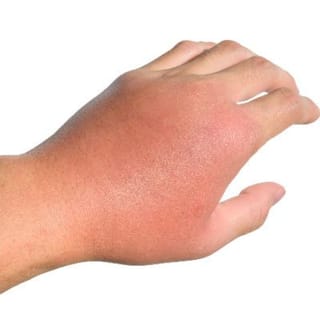 Cellulitis is a common bacterial infection of the deeper structures of the skin. The infection presents as a focal area of redness, swelling, and pain which is warm to the touch. These skin findings can be accompanied with fevers, chills, fatigue, and malaise. Cellulitis can affect any part of the body, but is common on the lower legs for adults and on the face for children. Because the infection can spread and become life-threatening, prompt diagnosis and treatment with antibiotics is important.
Cellulitis is a common bacterial infection of the deeper structures of the skin. The infection presents as a focal area of redness, swelling, and pain which is warm to the touch. These skin findings can be accompanied with fevers, chills, fatigue, and malaise. Cellulitis can affect any part of the body, but is common on the lower legs for adults and on the face for children. Because the infection can spread and become life-threatening, prompt diagnosis and treatment with antibiotics is important.
Disclaimer:
The information on this website is provided for educational and information purposes only and is not medical advice. Always consult with a licensed medical provider and follow their recommendations regardless of what you read on this website. If you think you are having a medical emergency, dial 911 or go to the nearest emergency room. Links to other third-party websites are provided for your convenience only. If you decide to access any of the third-party websites, you do so entirely at your own risk and subject to the terms of use for those websites. Neither Davidson Dermatology, nor any contributor to this website, makes any representation, express or implied, regarding the information provided on this website or any information you may access on a third-party website using a link. Use of this website does not establish a doctor-patient relationship. If you would like to request an appointment with a health care provider, please call our office at (843) 216-3376.



